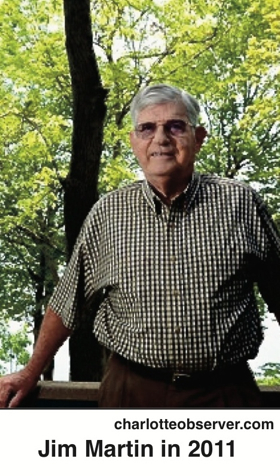Rascals case in brief
In the beginning, in 1989, more than 90 children at the Little Rascals Day Care Center in Edenton, North Carolina, accused a total of 20 adults with 429 instances of sexual abuse over a three-year period. It may have all begun with one parent’s complaint about punishment given her child.
Among the alleged perpetrators: the sheriff and mayor. But prosecutors would charge only Robin Byrum, Darlene Harris, Elizabeth “Betsy” Kelly, Robert “Bob” Kelly, Willard Scott Privott, Shelley Stone and Dawn Wilson – the Edenton 7.
Along with sodomy and beatings, allegations included a baby killed with a handgun, a child being hung upside down from a tree and being set on fire and countless other fantastic incidents involving spaceships, hot air balloons, pirate ships and trained sharks.
By the time prosecutors dropped the last charges in 1997, Little Rascals had become North Carolina’s longest and most costly criminal trial. Prosecutors kept defendants jailed in hopes at least one would turn against their supposed co-conspirators. Remarkably, none did. Another shameful record: Five defendants had to wait longer to face their accusers in court than anyone else in North Carolina history.
Between 1991 and 1997, Ofra Bikel produced three extraordinary episodes on the Little Rascals case for the PBS series “Frontline.” Although “Innocence Lost” did not deter prosecutors, it exposed their tactics and fostered nationwide skepticism and dismay.
With each passing year, the absurdity of the Little Rascals charges has become more obvious. But no admission of error has ever come from prosecutors, police, interviewers or parents. This site is devoted to the issues raised by this case.
On Facebook
Click for earlier Facebook posts archived on this site
Click to go to
Today’s random selection from the Little Rascals Day Care archives….
Click for earlier Facebook posts archived on this site
Click to go to
Today’s random selection from the Little Rascals Day Care archives….
‘I was aware of the possibility of childish fantasy….’
 July 11, 2014
July 11, 2014
“…. As you might imagine, I had not had reason to think about the Little Rascals case until your email arrived. Yes, I was very interested in the case at the time, but had no role or authority to intervene. (See governor’s 1991 response to letter writers.) The arrests and charges were highly publicized, as were the proceedings of the trial, upon which the two accused were convicted. So, like most citizens, I felt a compulsion to follow the case, at least insofar as the news coverage.
“My recollection is that both the horrible accusations and the contrary indications of coached and imaginative testimony of the children were featured in the coverage…. Being very familiar with Arthur Miller’s brilliant drama, ‘The Crucible,’ I was aware of the possibility of childish fantasy passing as falsely condemning testimony. From a distance, most readers probably shared the concern, ‘What if it were true?’
“I do not recall whether the defense attorneys contacted my office in an appeal for clemency in 1991-1992. Had they done so, they would have been advised that my practice was to let the appellate courts complete their judicial review before considering clemency. This was complete in 1995 when the NC Supreme Court declined to review the finding by the Court of Appeals of trial error, at which time there would be no cause for Governor Hunt to intervene. I have great respect for the judgment and integrity of then Chief Justice Burleigh Mitchell, and that would settle the legal principles of the matter for me.
“I can only wonder what conclusion I might have reached had the appeal for clemency been properly before me. My approach in such cases was to meet separately with advocates on both sides, without restricting the nature or style of what they had to say. I would make my decision based on corroborated evidence and the trial record, without following its standards for disqualifying some evidence. I gave attention to two main standards: (a) whether the punishment was suited to the nature of the crime, and (b) whether there was doubt as to the guilt of the person convicted….
“I believe your cause is to persuade the Governor to issue a Pardon of Innocence for Bob Kelly and Dawn Wilson. It may be difficult to produce exculpatory evidence several decades after the events. You did not say whether Mr. Kelly and/or Ms. Wilson wish to return to that gauntlet, considering the degree to which they have restored their lives. If they do, it would my hope that Governor McCrory and his counsel would weigh the two guidelines cited above, although no Governor is bound in clemency matters by any precedent of his predecessors. While it can be difficult to prove a negative, it would help your cause if there were former accusers now in their thirties who have recanted the accusations of their childhood. Otherwise, the appellate finding of procedural error alone might not be sufficient.”
– From a letter from former Gov. Jim Martin responding to my question about his recollections of the Little Rascals Day Care case
As welcome as a gubernatorial pardon would be, my hopes for the Edenton Seven are more modest: a “statement of innocence” from the governor or attorney general similar to that given the defendants in the Duke lacrosse case.
If only the Little Rascals prosecutors had been as familiar with “The Crucible” as was the governor….
What is ‘appropriate indemnity’ for wrongful prosecution?

justicedenied.org
Edwin Borchard
June 21, 2016
“One of the earliest arguments for financial compensation for the wrongly incarcerated came in 1932, from the Yale law professor Edwin Borchard. In an influential book called ‘Convicting the Innocent: Sixty-five Actual Errors of Criminal Justice,’ Borchard wrote, ‘When it is discovered after conviction that the wrong man was condemned, the least the State can do to right this essentially irreparable injury is to reimburse the innocent victim, by an appropriate indemnity for the loss and damage suffered.’ He noted, ‘European countries have long recognized that such indemnity is a public obligation.’ But it would be many years before the United States began puzzling through what constituted an ‘appropriate indemnity.’ It wasn’t until the first DNA exoneration, in 1989, that most states began to seriously consider compensation.
“There is still no consensus about the value of lost time. Missouri gives exonerees $50 a day for time served, California twice that much. Massachusetts caps total compensation at $500,000. In Maine, the limit is $300,000; in Florida, it’s $2 million. The variation is largely arbitrary. ‘If there’s a logic to it, I haven’t seen it,’ Robert J. Norris, a researcher at SUNY Albany who has studied compensation statutes, told me…. Twenty states have no compensation statutes at all.”
– From “The Price of a Life: What’s the right way to compensate someone for decades of lost freedom?” by Ariel Levy in the New Yorker (April 13, 2015)
North Carolina exonerees are entitled to $50,000 for each year spent in prison, plus job training and college tuition, up to a maximum of $750,000. However, those statutes apply only to persons “granted a pardon of innocence by the Governor upon the grounds that the crime with which the person was charged either was not committed at all or was not committed by that person.”
As excruciatingly demonstrated in the case of Henry McCollum and Leon Brown, not every governor is in a hurry to enable that compensation.
![]()
DA acknowledges junk science in arson conviction

brooklynda.org
Ken Thompson
Dec. 17, 2015
“Three men convicted of murder by arson for a 1980 fire in Brooklyn (were) exonerated on Wednesday….
“What carried the three men into prison was not reliable evidence of an intentionally set blaze, but rather an arson investigation that was more like shamanism than science, rooted in hunches and folklore and disconnected from the dynamics of actual fires. Like the comparisons of bite marks, hair and handwriting, it was a forensic practice that had the authority of white-coat laboratory science but virtually none of its rigor….”
– From “Between Guilt and Innocence, an Evolution in Fire Science”
by Jim Dwyer in the New York Times (Dec. 16)
Hats off to District Attorney Ken Thompson, who moved to vacate the three convictions, citing “circumstantial evidence, outdated science and the testimony of a single, wholly unreliable witness….”
Columnist Dwyer is reminded of a statue at the University of Pennsylvania Law School depicting a mythological Chinese beast believed to have the ability to tell the guilty from the innocent by butting them. Inscribed on its base: “Slow and painful has been man’s progress from magic to law.”
“Slow and painful” indeed. Ask Junior Chandler, who has been imprisoned since April 17, 1987, for committing the magical crime of “satanic ritual abuse.”
‘Moral panics: they may begin with a legitimate societal concern….’
 Jan. 4, 2018
Jan. 4, 2018
“Sexual harassment or assault, by contrast [with the Communism scare in Hollywood], obviously warrants discipline at the very least and criminal prosecution wherever appropriate. But then and now, what’s lacking is any shared obligation to respect constitutional rights, ensure due process or maintain a sense of proportion…. And that’s the thing about moral panics: they may begin with a legitimate societal concern – drug and alcohol abuse, teen pregnancy, child abuse, human trafficking – but they can devolve into Prohibition, movie and broadcast censorship, banning comic books and rock ‘n’ roll, and general crusades against anything in popular culture challenging the official conformist line. And if you’re not careful, you’ll soon find yourself succumbing to irrational fears of ‘satanic ritual abuse,’ ‘backward masking’ in rock lyrics and secret pedophilia rings run out of suburban pizzerias….
“It’s not witches, but the witch-hunters, that we should really fear, for they lead us to abdicate our responsibilities to be fair, thoughtful, measured, and rational….”
– From “Season of the witch” by Joel Bellman at LA Observed (Dec. 10)
![]()











0 CommentsComment on Facebook